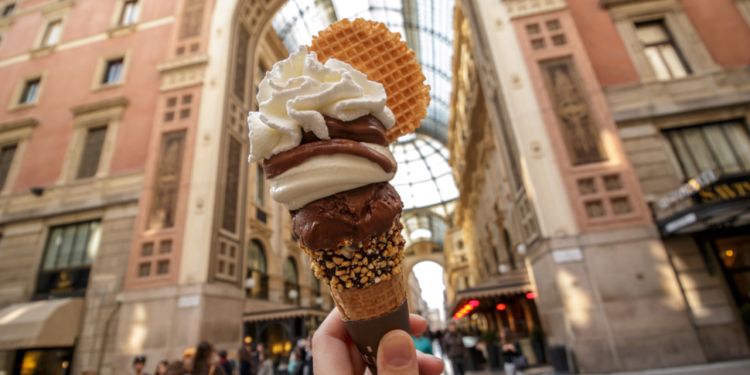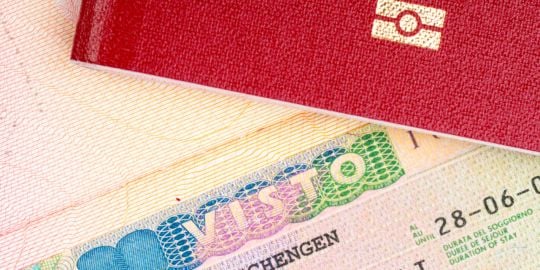The Milanese food scene

Pasta, rice, vegetables and good meat... The Milanese cuisine is all about simple, tasty and elegant eating. It is the right mix between the slow food movement and a perfect taste. Let's have a look at some of the most popular dishes and spots for eating out.
What to eat and where
Eating in Milan is a social phenomenon. This is very easy to understand by the multitude of typical Lombardian dishes, by the influences from every region in Italy, and by a broad range of international restaurants. In fact, food is such an essential part of the daily life that all other activities rotate around the importance of gastronomy. This makes Milan heaven for gourmets and hell for the dieters.
Typical dishes
The Milanese cuisine has been influenced by its past. It is known for the risottos, as a result of the rice cultivation in the lower part of the area, but is also famous for the meat and salami dishes, as a result of the cattle and pig breeding. In addition to this, the humid and cold winter climate lead to a tradition of cooking 'comfort food' dishes, like soups and boiled dishes. Every Milanese meal reveals the story of the city and its crucial historical role as an exchange centre.
Some of the most typical delicacies are:
Risotto allo zafferano (risotto alla milanese)
Cotoletta alla milanese
Ossobuco
Trippa alla milanese
Panettone
The Milanese culture has a lot of respect for cheese, like gorgonzola and mascarpone. Carbohydrates are considered essentials and can be eaten as polenta or grains like segale (rye), orzo and grano (wheat). Soups are also very common and are usually combined with cereals and legumes and come by the name minestrone. The minestrone often goes in combination with vegetables like asparagus, carrots, broccoli and green beans.
The stages of a meal
As eating is a very appreciated and complex activity in Italy, it is divided into phases, each offering a delight on its own. The first part is the antipasto, served at the table before the actual meal. Antipasto is a platter of mixed cold cuts like salami, cooked salami, or cured ham combined with cheese. Next are the primi piatti, which usually consist of pasta, polenta or legumes. Subsequently come the piatti secondi which contain meat like beef, pork, boar (cinghiale) or fish steaks. Last comes the dolce, which can be tiramisu, or some cake like the sbrisolona, that are accompanied by some digestive like grappa and limoncello. Coffee is also a must and is offered after every meal, as well as café d'orzo that is a decaf option made by roasted barley.
Where to eat
The main places to find traditional Milanese food are the trattorie. Some of the best trattorie in Milan are:
Antica Hostaria della Lanterna
Bottiglieria Trattoria da Pino
The restaurants from Eataly
Giulio Pane e Ojo
Fishbar de Milan
For the pasta lovers, Miscusi is an excellent restaurant which allows the guests to choose their type of pasta with personalized toppings.
Milan is also famous for some Michelin star restaurants, such as:
Cracco, via Victor Hugo 4 (chef Carlo Cracco.
Trussardi alla Scala, piazza della Scala 5 (chef Roberto Conti)
Felix, Galleria Vittorio Emanuele II, Piazza Duomo, 21, 5° piano (chef Felice Lo Basso)
Lume by Luigi Taglienti, via Giacomo Watt 37 (Chef Luigi Taglienti)
Farm-stay places, known as agriturismo, offer a unique experience. These places provide farm raised food cooked with bio ingredients. Besides, the agriturismi make their own wine, provide possibilities for room rental, and host events like weddings and birthdays. Good examples are:
Cascina Pietrasanta
Da Antonio
La Barcella
Milan offers some excellent street food alternatives. Like every Italian city, Milan is home to many pasticcerie and gelaterie which guarantee tastes that you won't find anywhere else in the world. Some of the most renowned gelaterie are La Gelateria della Musica, Pavé ' Gelati & Granite, Gusto 17, and Ciacco. These places use fresh ingredients without artificial sweeteners or additives.
Other than the respect that Italians give to eating, Milan offers plenty of possibilities to eat on the go. Some of the most famous street food places are:
Luini
Ravioleria Sarpi
MAMAstrEAT Ticinese
Italian food is one of the tastiest in the world, but it is also healthy. The real key for enjoying the delicacies that this city offers is to eat consciously as Italians would. The importance of being moderate, respecting local produce and using all of the ingredients is the key to sustainability and adapting to the modern day Milanese mantra.









